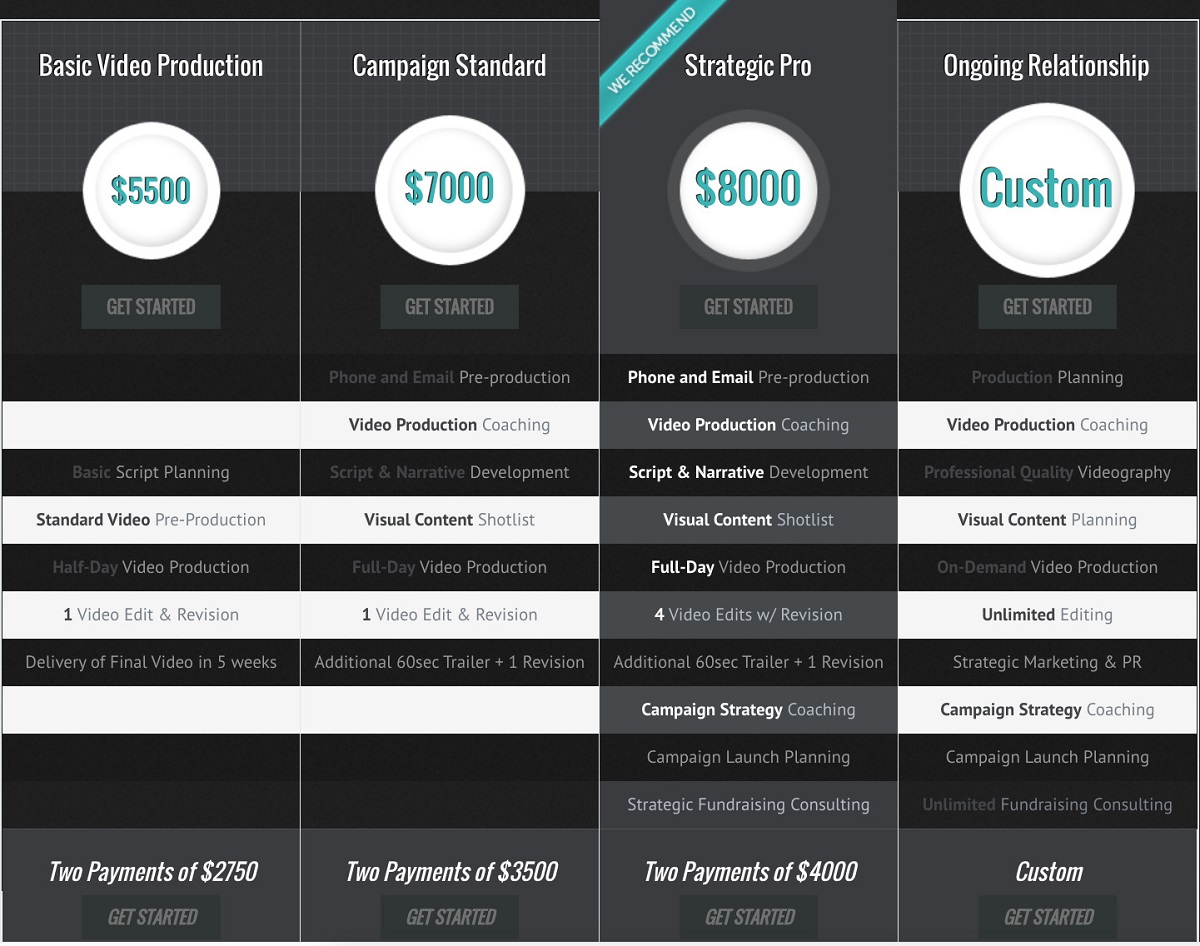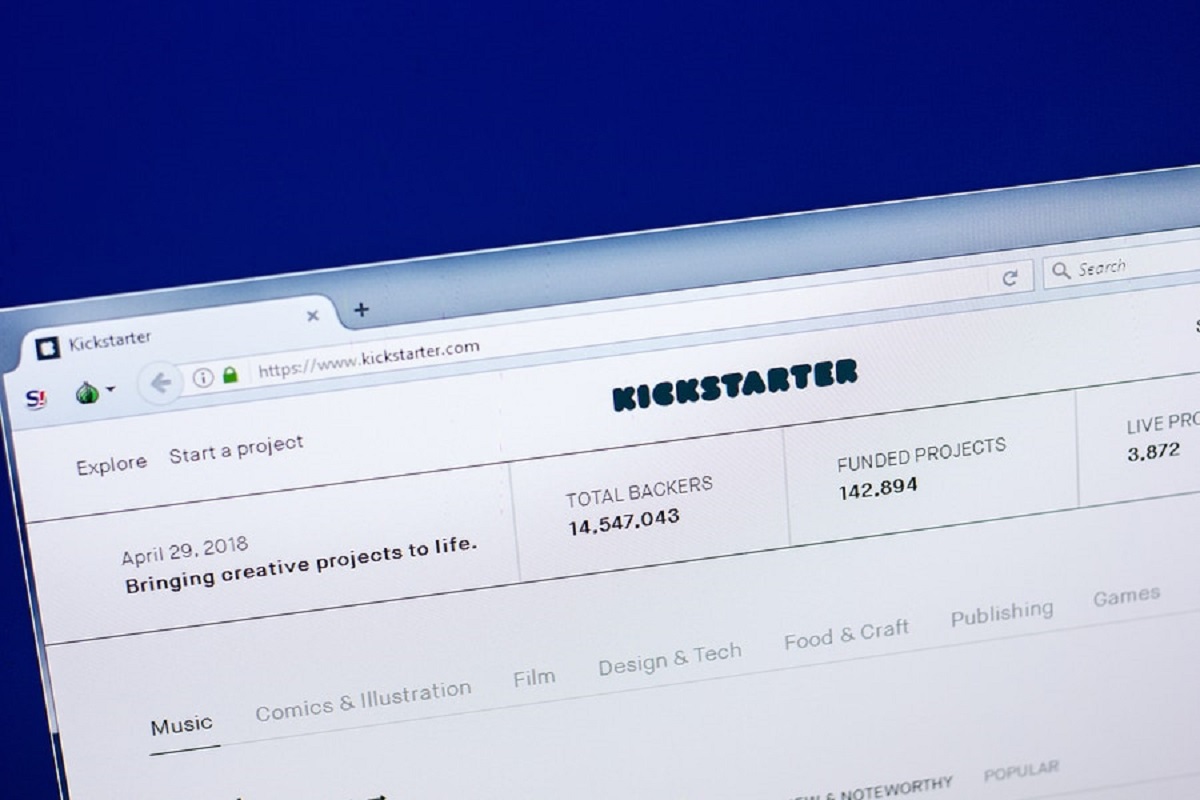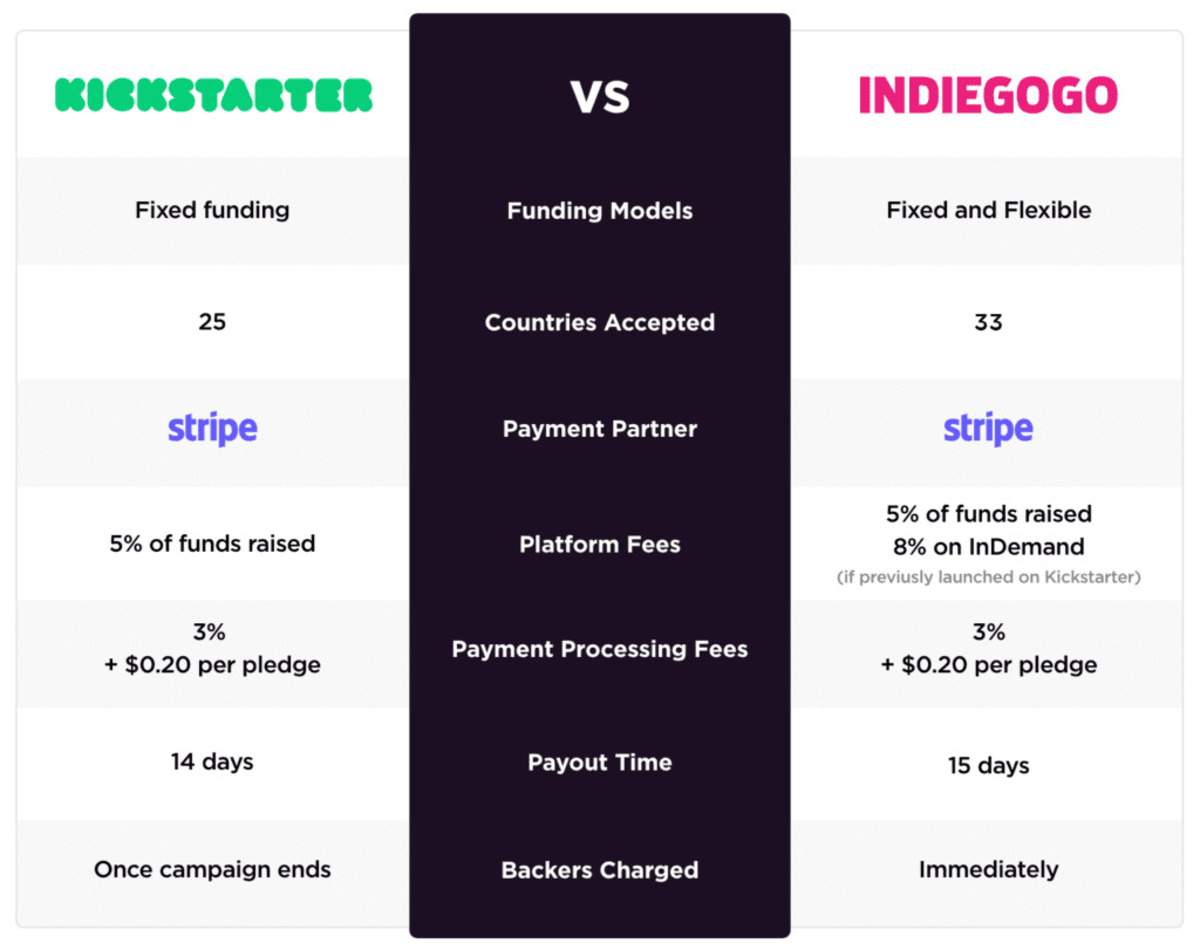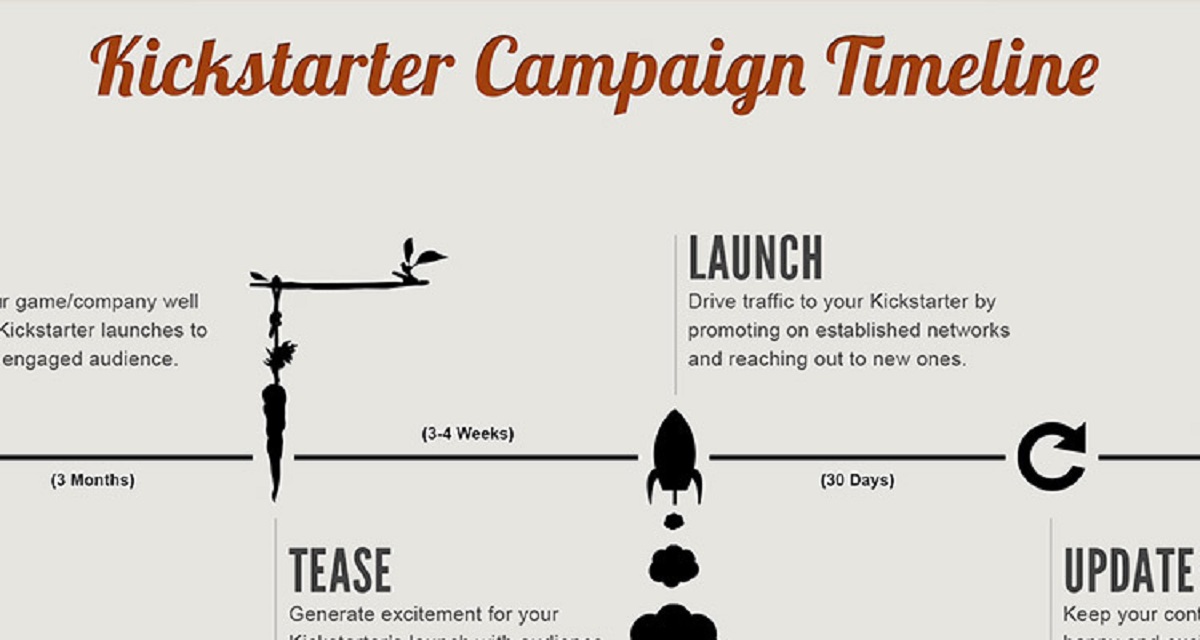Introduction
Welcome to the world of crowdfunding, where passionate creators have the opportunity to bring their innovative ideas to life with the support of a community. At the heart of a successful crowdfunding campaign lies a well-crafted Kickstarter video. Whether you’re a budding entrepreneur, an artist, or a nonprofit organization, a compelling Kickstarter video can captivate potential backers and inspire them to contribute to your cause.
But how much does it actually cost to create a high-quality Kickstarter video? Well, the answer can vary depending on several factors. In this article, we will delve into the different aspects that can impact the cost of making a Kickstarter video. Whether you’re working with a limited budget or have more financial flexibility, understanding these factors will help you make informed decisions and create a video that effectively communicates your vision.
Creating a Kickstarter video is a multi-stage process that involves pre-production, production, and post-production. Each stage has its own specific costs, and additional expenses may also arise during the course of your project. By carefully considering these elements, you can determine an estimated budget for your Kickstarter video and find the right video production company that aligns with your vision and finances.
While cost is an important consideration, it’s equally crucial to prioritize quality and authenticity in your Kickstarter video. When backers see the passion and dedication behind your project, they are more likely to contribute and spread the word. So, let’s explore the factors that influence the cost of making a Kickstarter video and discover how you can create a compelling video that resonates with your audience.
Why do you need a Kickstarter video?
In today’s digital age, a Kickstarter video has become an essential tool for capturing the attention and support of potential backers. Here are a few key reasons why you need a compelling Kickstarter video for your crowdfunding campaign:
- Visual storytelling: A video allows you to tell your story in a dynamic and engaging way. It enables you to showcase your project, product, or idea in action, leaving a lasting impression on viewers.
- Building trust and credibility: A well-produced video can enhance your project’s credibility and instill trust in potential backers. It demonstrates your professionalism and dedication, increasing the likelihood of people investing in your campaign.
- Emotional connection: Videos have the power to evoke emotions and create a personal connection with viewers. Through captivating visuals and heartfelt storytelling, you can forge a strong bond between your project and the audience, compelling them to support your cause.
- Conveying key messages effectively: In a video, you have the opportunity to communicate your project’s unique selling points, the problem you’re solving, and the impact it can make. Visual and auditory cues can help convey complex information in a concise and easily digestible format.
- Increased visibility: Kickstarter videos are not only crucial for engaging potential backers on your campaign page but can also be shared across various social media platforms. A well-crafted video has the potential to go viral, reaching a wider audience and driving more traffic to your fundraising efforts.
Without a Kickstarter video, you risk missing out on these significant benefits and may struggle to capture the attention of backers in a crowded crowdfunding landscape. It’s an investment worth making, as the right video can be a game-changer for the success of your campaign.
Now that you understand the importance of a Kickstarter video, let’s delve into the factors that can influence the cost of creating one.
Factors that affect the cost of making a Kickstarter video
The cost of creating a Kickstarter video can vary depending on several factors. Let’s take a closer look at some of the key elements that can influence the overall cost:
- Video length: The length of your Kickstarter video plays a significant role in determining the cost. Longer videos require more time, effort, and resources to produce, which can result in higher production costs. Keep in mind that an ideal Kickstarter video is typically around 2-3 minutes in length to maintain viewer engagement.
- Concept and complexity: The concept and complexity of your video can impact the cost. If you have a unique and intricate idea that requires elaborate production elements, such as special effects, animation, or multiple shooting locations, the production costs are likely to be higher.
- Scriptwriting and storyboarding: Developing a compelling script and storyboard is crucial for a successful Kickstarter video. If you decide to hire professional scriptwriters and storyboard artists, their fees will add to the overall cost. However, investing in professional scriptwriting can greatly enhance the quality and effectiveness of your video.
- Talent and crew: The selection of talent, such as actors or voice-over artists, can impact the production costs. Hiring experienced professionals will add to the budget but can significantly enhance the overall appeal and impact of your video. Additionally, the size of the production crew, including cameramen, sound technicians, and lighting experts, will also affect the costs involved.
- Location and set design: If your Kickstarter video requires specific locations or sets, you may incur additional expenses. Renting or securing locations, designing and constructing sets, and obtaining necessary permits contribute to the overall production costs.
- Equipment and technology: The type and quality of equipment and technology utilized during the production process can affect the cost. High-definition cameras, professional lighting equipment, and advanced editing software may lead to higher production expenses. However, investing in top-notch equipment can significantly enhance the visual appeal and quality of the final video.
- Music and sound design: Music and sound design play a critical role in setting the mood and enhancing the emotional impact of your Kickstarter video. Licensing original music or acquiring rights to use existing tracks can add to the budget. Additionally, hiring a sound designer to create a polished and immersive audio experience can increase the post-production costs.
These are just a few of the primary factors that can influence the cost of making a Kickstarter video. Each project is unique, and additional elements specific to your campaign may contribute to the overall expenses.
Now that we understand the factors that affect the cost, let’s explore the specific cost breakdown in the different stages of video production.
Pre-production costs
Pre-production is the initial phase of video production, where the groundwork for creating a successful Kickstarter video is laid. It involves several essential tasks that contribute to the overall cost of the project. Here are some pre-production costs to consider:
- Concept development: This is the stage where your initial ideas take shape. It involves brainstorming, researching, and developing a compelling concept for your Kickstarter video. Depending on your resources and preferences, you may choose to work with a professional video production company or handle concept development in-house. The costs involved in this stage will include consultations, ideation sessions, and creative fees if you decide to hire professionals.
- Scriptwriting and storyboarding: A well-crafted script and a visual storyboard are crucial for conveying your message effectively. Hiring professional scriptwriters and storyboard artists will incur additional costs. However, their expertise can greatly enhance the quality and impact of your Kickstarter video.
- Location scouting: Finding the perfect filming locations that align with your vision requires time and effort. This process involves researching suitable places, visiting potential locations, and securing necessary permits. The costs associated with location scouting include travel expenses, permit fees, and location rental fees if applicable.
- Casting: If your Kickstarter video requires actors or spokespersons, the cost of casting auditions, talent fees, and any necessary rehearsals should be factored into your budget. Hiring professional actors can elevate the quality and authenticity of your video.
- Set and prop design: Creating a visually captivating set and acquiring or designing props relevant to your project will incur expenses. Whether it’s building sets from scratch, renting available sets, or purchasing and customizing props, budgeting for set and prop design is essential.
- Production planning: This is the stage where you finalize logistics, create a production schedule, and coordinate with all the necessary crew members. The costs involved can include project management fees, equipment rentals, transportation, and meals for the crew on shoot days.
These are just some of the typical pre-production costs associated with creating a Kickstarter video. The complexity and scale of your project, as well as your specific requirements, may result in additional expenses.
As you determine your budget for your Kickstarter campaign, it’s important to allocate funds for pre-production costs to ensure a solid foundation for the rest of the production process. Now, let’s move on to the next stage: production costs.
Production costs
Once the pre-production phase is completed, it’s time to move on to the production stage of creating your Kickstarter video. This is where your script comes to life and all the elements start coming together. Here are some production costs to consider:
- Equipment: Renting or purchasing the necessary equipment for the shoot is a significant production cost. This includes cameras, lenses, lighting equipment, sound recording gear, and any specialized equipment required for your specific project. The quality of the equipment can greatly impact the visual and audio quality of your video.
- Crew: Hiring the right crew members is crucial for a successful shoot. This includes a director, cinematographer, camera operators, sound technicians, makeup artists, and other necessary crew members. The size and expertise of the crew will impact the production costs, as each individual plays a vital role in ensuring a smooth and efficient shoot.
- Talent fees and extras: If your Kickstarter video features actors, models, or any other talent, their fees should be factored into your budget. Additionally, you may need to account for extras or background actors, especially if your video requires crowd scenes or specific scenarios that involve multiple individuals.
- Location-related expenses: If your shoot takes place outside of a controlled studio environment, you may incur additional costs related to location rentals, permits, insurance, and travel expenses for your crew. It’s essential to plan and budget for these expenses to ensure a successful shoot.
- Props and wardrobe: Depending on the requirements of your video, you may need to source and procure props and wardrobe items. Whether it’s everyday objects, special props, or costumes, allocate funds for acquiring or renting these items.
- Catering and craft services: Keeping your crew energized and well-fed during the shoot is important. Budgeting for catering and craft services, including meals, snacks, and drinks, ensures that everyone on set is comfortable and satisfied throughout the production process.
These are some of the common production costs associated with creating a Kickstarter video. The scale and complexity of your project, as well as any unique requirements, may result in additional expenses.
By diligently planning and budgeting for production costs, you can ensure that your shoot runs smoothly and efficiently, leading to high-quality footage that aligns with your vision. Now, let’s move on to the final stage: post-production costs.
Post-production costs
After the completion of the production stage, the post-production phase begins. This is where all the footage and audio captured during the shoot are edited, refined, and transformed into the final Kickstarter video. Here are some post-production costs to consider:
- Video editing: Editing is a crucial step in creating a polished and cohesive Kickstarter video. The cost of video editing includes the fees of the editor, who will work closely with you to bring your vision to life. This process involves trimming, rearranging, and enhancing the footage, as well as adding any necessary visual effects or motion graphics.
- Color grading: Color grading helps create a consistent and visually appealing look for your video. This process involves adjusting the color, contrast, and saturation of the footage to achieve a desired aesthetic. Hiring a professional colorist or utilizing advanced color grading software may add to the post-production costs.
- Sound editing and mixing: High-quality audio is essential for a captivating Kickstarter video. Sound editing involves cleaning up the audio tracks, removing background noise, and ensuring the dialogue is clear. Sound mixing combines the various audio elements, such as music, voice-over, and sound effects, to create a balanced and immersive audio experience. Budgeting for professional sound editing and mixing can greatly enhance the overall quality of your video.
- Music licensing: If you choose to use copyrighted music in your Kickstarter video, you will need to obtain the necessary licenses and pay the associated fees. Alternatively, you may opt for original music or royalty-free tracks, which can still add to the costs if you hire a composer or purchase licenses for high-quality tracks.
- Graphic design and motion graphics: Incorporating visually appealing graphics or motion graphics can elevate the production value of your Kickstarter video. If your project requires custom graphic design or motion graphics, budgeting for the expertise of a graphic designer or motion graphics artist is essential.
- Rendering and file delivery: Once the video is complete, it needs to be rendered into its final format and delivered in the appropriate file types and resolutions. Factoring in the time and costs associated with rendering and file delivery ensures a smooth finalization process.
These are some of the typical post-production costs to consider when budgeting for your Kickstarter video. Depending on the complexity of your project and any specific requirements, additional expenses may arise during this phase.
By allocating funds for post-production costs, you can ensure that your video is refined, visually appealing, and effectively conveys your message. Now, let’s explore some additional costs to consider when determining your overall budget.
Additional costs to consider
While pre-production, production, and post-production costs are the main components of creating a Kickstarter video, there are additional expenses that you should factor into your overall budget. Consider the following costs:
- Travel and accommodation: If your project requires shooting in different locations or if you need to travel to meet with a video production company, you will need to allocate funds for travel expenses, including transportation and accommodations for the crew.
- Equipment rentals: In addition to the production phase, you may need to rent equipment for other parts of the project, such as photography, interviews, or additional promotional videos. Ensure you include these equipment rental costs in your budget.
- Translation and localization: If you plan to target international markets and need to translate your video into multiple languages or create localized versions, the expenses for professional translation services should be considered.
- Promotion and marketing: While not directly related to the production of the video, allocating funds for promoting and marketing your Kickstarter campaign is crucial for its success. This may involve social media advertising, influencer collaborations, or other promotional efforts to reach a wider audience.
- Campaign platform fees: Keep in mind that most crowdfunding platforms, including Kickstarter, charge a percentage fee for successful campaigns. Factor this fee into your budget to ensure you account for the platform’s commission.
- Contingency budget: It’s wise to set aside a contingency budget to account for any unexpected expenses or revisions that may arise during the production and post-production process. Having a buffer will help you manage unforeseen circumstances without compromising the quality or timeline of your video.
By considering these additional costs, you can ensure that your budget is comprehensive and accounts for all the necessary expenses associated with your Kickstarter video project. Plan ahead and allocate funds appropriately to avoid any financial strain or project delays.
Now that we have explored the various costs involved in creating a Kickstarter video, let’s move on to the next step: determining your budget.
How to determine your budget for a Kickstarter video
Determining your budget for a Kickstarter video requires careful consideration and planning. Here are some steps to help you establish a realistic budget:
- Define your goals: Start by clearly defining the objectives and goals of your Kickstarter campaign. Consider how much funding you aim to raise, the target audience you want to reach, and the impact you want your video to have. Understanding your goals will help you align your budget with your campaign’s overall strategy.
- Research video production costs: Conduct extensive research to get an idea of the typical costs involved in creating a Kickstarter video. Look for examples of videos similar to what you envision for your project and analyze their production quality. This will give you a baseline understanding of the financial investment required.
- Break down the production process: Divide the production process into its different stages, including pre-production, production, and post-production. Determine the specific tasks and expenses associated with each stage, such as scriptwriting, location scouting, equipment rentals, and post-production editing. This breakdown will help you itemize and allocate funds accordingly.
- Get quotes and estimates: Reach out to multiple video production companies or independent professionals and request quotes and estimates for your project. Provide them with details about your vision, script, video length, and any specific requirements. Comparing quotes will give you a better understanding of the average costs within the industry and help you make an informed decision.
- Consider your resources: Evaluate your available resources, including your own skills, equipment, and connections within the industry. Determine what aspects of the production process you can handle in-house and what requires external expertise. This assessment will help you optimize your budget by minimizing outsourcing and utilizing your existing resources effectively.
- Create a contingency fund: As mentioned earlier, include a contingency budget in your overall plan. Set aside a percentage of the total budget to account for unexpected expenses or revisions that may arise during production.
By following these steps and accurately assessing the costs involved, you can establish a budget that aligns with your campaign’s goals and financial capabilities. Remember to strike a balance between your desired quality and the resources you have available, ensuring a successful and effective Kickstarter video.
Now, let’s explore how to find the right video production company for your Kickstarter project.
Finding the right video production company for your Kickstarter project
Choosing the right video production company is crucial for the success of your Kickstarter project. Here are some key factors to consider when finding the perfect fit:
- Portfolio and expertise: Take a look at the company’s portfolio and previous work to gauge their production quality and style. Choose a production company that has experience in creating Kickstarter videos or projects similar to yours. A company with expertise in your niche will understand your vision and effectively bring it to life.
- Client testimonials and reviews: Read client testimonials and reviews to get insights into the experiences of their previous clients. Check for positive feedback regarding their professionalism, reliability, and the ability to deliver on time and within budget. This will give you confidence in their capabilities.
- Communication and collaboration: Effective communication is crucial when working with a video production company. Evaluate their responsiveness, willingness to listen to your ideas, and ability to provide clear and timely updates throughout the production process. Look for a company that values collaboration and takes your input into consideration.
- Budget and cost transparency: Discuss the budget and cost breakdown with potential production companies. Ensure they provide you with a detailed estimate, including expenses for pre-production, production, and post-production. A transparent and well-documented pricing structure will help you stay within your budget.
- Timeline and availability: Assess the company’s availability and timeline for your project. Discuss the estimated timeframe for each phase of production and ensure it aligns with your campaign’s schedule. It’s important to work with a company that can deliver the final video within your desired timeframe.
- Collaborative approach: Look for a production company that values collaboration and involves you in the decision-making process. They should be open to your ideas and receptive to feedback, ensuring that the final video reflects your vision and effectively communicates your message.
- Contracts and legal aspects: Review the contracts and legal aspects carefully before finalizing an agreement with a production company. Ensure that all rights, usage permissions, and project ownership are clearly defined and agreed upon to avoid any complications in the future.
By considering these factors and thoroughly evaluating video production companies, you can find the right partner for your Kickstarter project. Don’t rush the decision-making process; take the time to find a company that understands your vision and aligns with your goals.
Now that you have an understanding of how to find the right video production company, let’s summarize the key points discussed in this article.
Conclusion
Creating a high-quality Kickstarter video is an essential step in successfully crowdfunding your project. By understanding the factors that impact the cost of making a Kickstarter video, you can effectively budget and allocate funds to create a compelling and impactful video that resonates with your audience.
During the pre-production stage, consider costs like concept development, scriptwriting, location scouting, casting, and set design. In the production phase, budget for equipment rentals, crew fees, talent fees, and other production-related expenses. Post-production costs include video editing, color grading, sound editing and mixing, and music licensing.
Apart from the core production costs, additional expenses like travel, equipment rentals, translation, marketing, platform fees, and a contingency budget should also be considered when determining your overall budget.
When searching for the right video production company, evaluate their portfolio, client testimonials, communication skills, budget transparency, availability, collaborative approach, and legal aspects. Choosing the right partner will ensure that your project is in capable hands and that your vision is effectively brought to life.
Remember, a Kickstarter video is an investment in the success of your campaign. Striking a balance between your desired quality and available resources is vital. With careful planning, research, and collaboration, you can create a compelling Kickstarter video that captures the attention and support of potential backers, helping you bring your creative ideas to life.

























